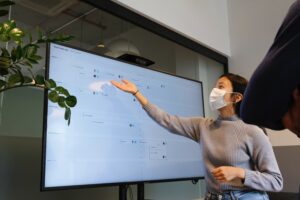I am a little late posting this, but last week we had a presentation by one Rebecca Bathurst-Hunt.
In this she talked about adpoting inquiry into the classroom at an elementary level. I was very happy to hear about this as I think inquiry is a wonderful way for young students to learn and enjoy themselves at the same time, as they learn best when they are enjoying the content. Additionally she covered a bit about play based learning, as for Kindergarten, most of what they do is play based learning and if it works for them, why not for older kids? Of course there is a limit to how much you can let them play, as many will choose to just do 100% playing and no learning, so there needs to be a moderation of play and study time.
As for the imquiry, she said one of the best things you can do is start off learning with a question. For example, if you are learning about the ocean, ask them what they want to know about the ocean, or what are they curious about, or what they like most about it. This will allow them to shape their learning and take an active roll in how and what the lessons are about, hopefully making them more excited to learn.
